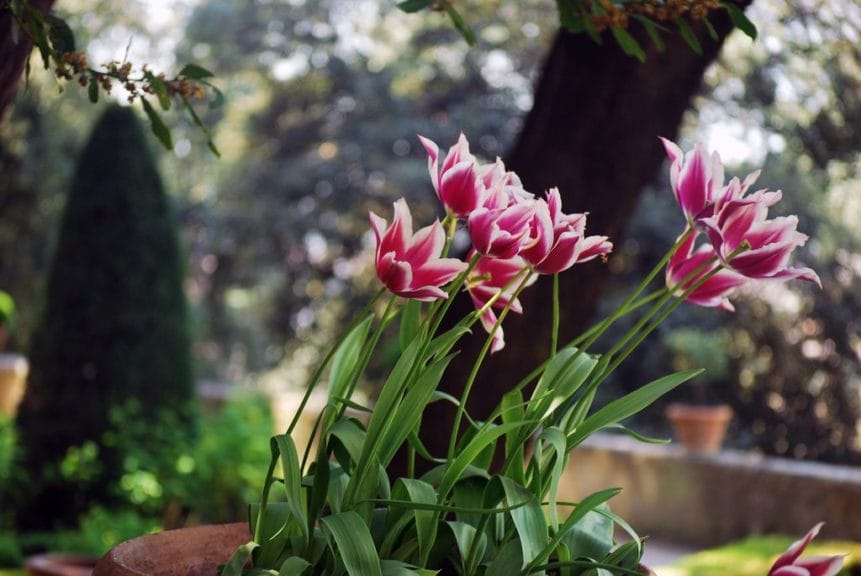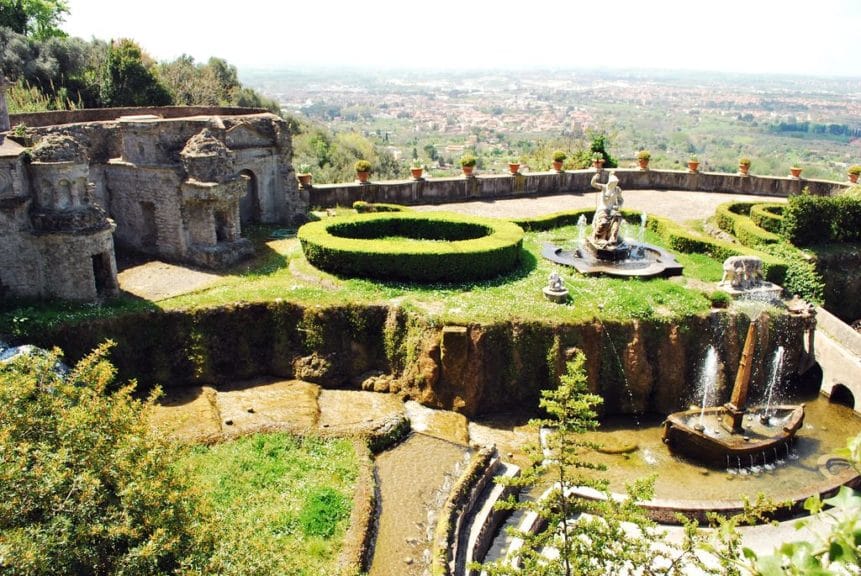Villa d'Este

My favorite part of Rome wasn’t in Rome. Sacrilege, I know, but take a day trip to the hill town of Tivoli and see if you don’t agree.
The remarkable Villa d’Este is one of two UNESCO World Heritage Sites in Tivoli. Villa Adriana, the ruins of Emperor Hadrian’s sumptuous estate, is the other, but since it lies outside of the town, it was too much for us to fit into a daytrip, though it can be done. As a garden lover, I much preferred to spend my time at Villa d’Este, where the landscape is the real star.

Inside the Palace
You can tour the villa interior, which has the typical painted walls and ceilings, though nothing as brilliant as we saw elsewhere in Italy. If you’re lucky you’ll catch an impromptu operatic concert as we did, but plan to spend most of your time enjoying the outdoors.

The Gardens
The palace gardens are famous as a model for other European gardens in the Renaissance tradition. They’re over-the-top in every way and a paradise for shutterbugs.

The winding terraced walkways are laced with flowers and punctuated at different intervals with ornamental architecture: parapets, alcoves, basins, jets of water, a nymphaeum, sculptures, grottoes. You pass casually by the Fountain of Dragons and believe you’re in a mythical land.

At the bottom is the centerpiece, the massive Fountain of Neptune backed by the Water Organ leading off to long reflecting pools flanked by orange trees and disappearing into hedges. You could easily spend a half day or more at the villa. Savor it. How often in life do we see things this lovely?

If you have time, Parco Gregoriana is only a few blocks away and is a much wilder place. While the Villa d’Este puts nature in order with fountains, statuary, geometric pools and clipped hedges, Gregoriana is out of control: ruins, waterfalls and rambling, lovely overgrowth.